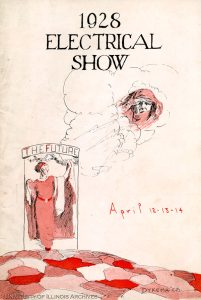 Since December 2012, the University Archives has acquired over 50 new accessions of materials which have augmented the Archives’ holdings that document the College of Engineering’s rich institutional memory. These acquisitions have revealed new sources and insights into the establishment and development of Engineering’s curriculum from the University’s founding in 1867, as well as faculty research and the creation of new research programs and laboratories and their affect on scientific and technological innovations. In addition to being arranged and described, Engineering administrative records and faculty papers have received advanced conservation and preservation treatment, and many records series have been digitized by the Library’s Digital Content Creation Unit. These newly-digitized materials facilitate greater access to the history of science and technology at the University of Illinois. Recently digitized administrative materials include Faculty Minutes, 1897-1902, 1918-2008 and Annual Reports, 1903-1959, 1970-1971, 1987-1988 .These records capture the work of committees, administrators, departments, and laboratories, including Engineering’s unique documentation of its own history through its Historical File, 1908-1996.
Since December 2012, the University Archives has acquired over 50 new accessions of materials which have augmented the Archives’ holdings that document the College of Engineering’s rich institutional memory. These acquisitions have revealed new sources and insights into the establishment and development of Engineering’s curriculum from the University’s founding in 1867, as well as faculty research and the creation of new research programs and laboratories and their affect on scientific and technological innovations. In addition to being arranged and described, Engineering administrative records and faculty papers have received advanced conservation and preservation treatment, and many records series have been digitized by the Library’s Digital Content Creation Unit. These newly-digitized materials facilitate greater access to the history of science and technology at the University of Illinois. Recently digitized administrative materials include Faculty Minutes, 1897-1902, 1918-2008 and Annual Reports, 1903-1959, 1970-1971, 1987-1988 .These records capture the work of committees, administrators, departments, and laboratories, including Engineering’s unique documentation of its own history through its Historical File, 1908-1996.
Continue reading “Engineering Materials Digitized and Online”

